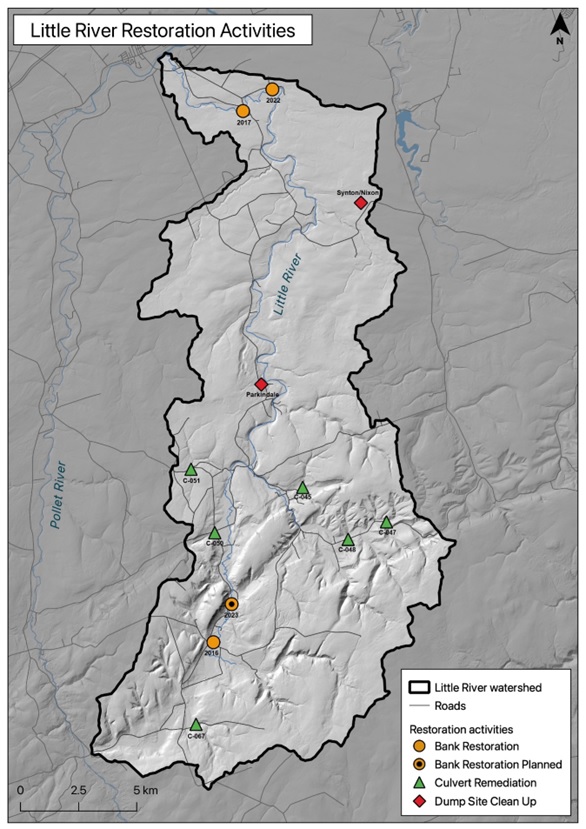Fourth Level Assessment – Aquatic Habitat Rehabilitation Plan
Fourth Level Assessment
Summary of Issues Identified from Information on Current Impacts
Culvert surveys by the Petitcodiac Watershed Alliance as part of their Broken Brooks program noted 13 culverts that were full barriers to fish passage and 5 culverts that were partial barriers to passage (Figure 7) within the watershed, a total of 18 impacted culverts. The PWA reports having taken steps to remediate 6 of these, suggesting that at least 7 known culverts remain which require attention.
Summary of Issues Identified from Aquatic and Riparian Habitat Assessment
Based on length – Rapid Geomorphic Assessments (RGAs) identified roughly 55% of the Little River as “in adjustment” indicating that instability is widespread. In only about 2% of the Little River’s length was Channel Stability found to be “stable”. Widening is the primary geomorphic process taking place on 46% of reaches, and the secondary geomorphic process in 27% of reaches. That is a combined 73% of reaches in the river where widening is either the primary or secondary geomorphic process underway.
Restoration Activities Undertaken
Restoration activities conducted within the Little River have taken the three main forms shown in Figure 17: Bank Stabilization, Dump Site Clean up, and culvert remediation. Bank Stabilization work has been done by the Petitcodiac Watershed Alliance (PWA), Fort Folly Habitat Recovery FFHR). Clean up of illegal dump sites has been done by PWA and FFHR. Culvert Remediation has been done by the PWA.













